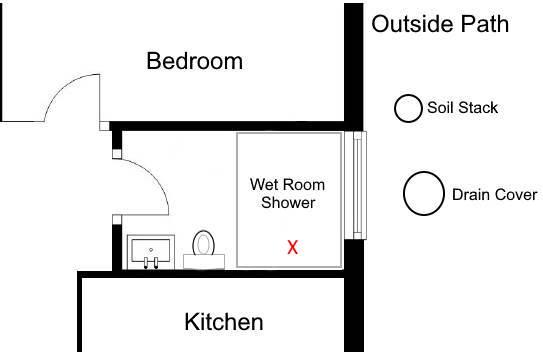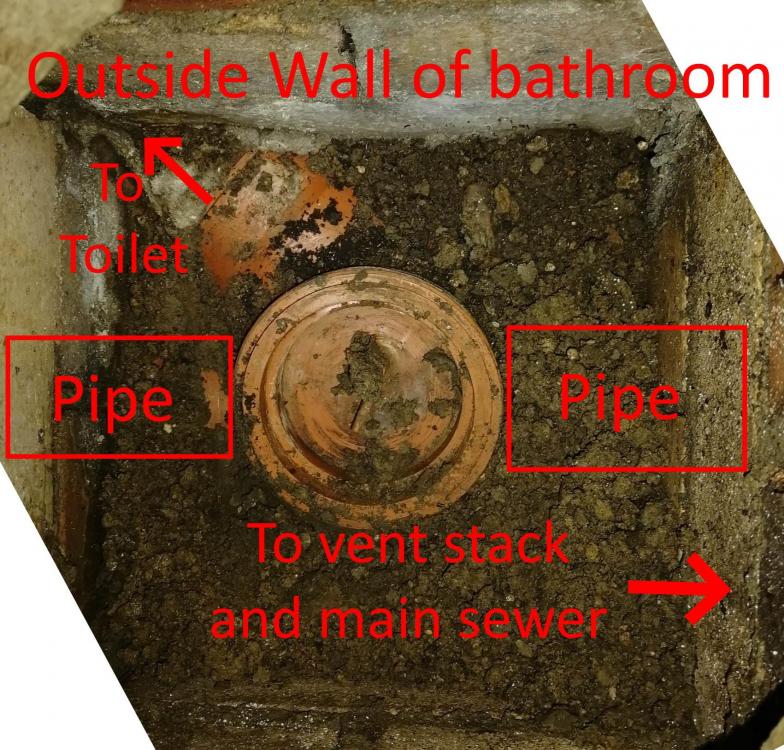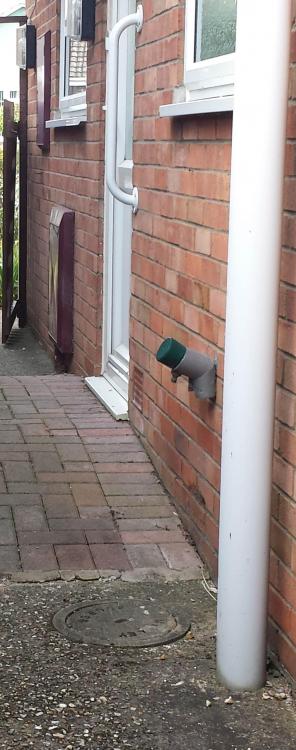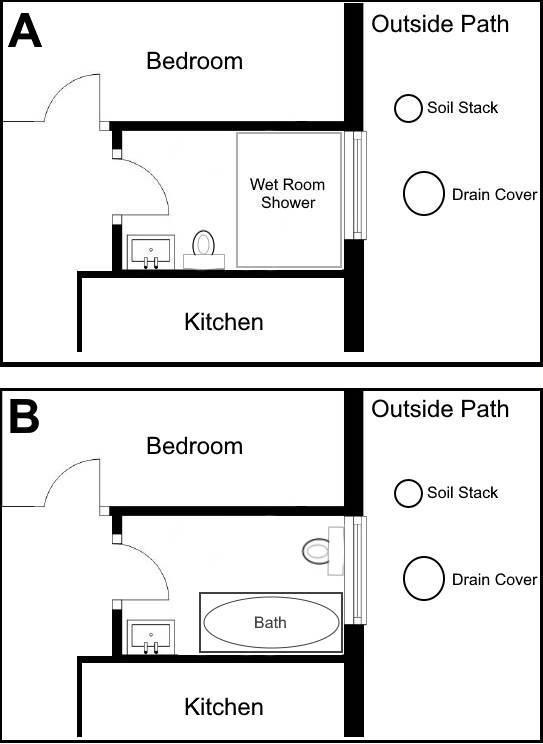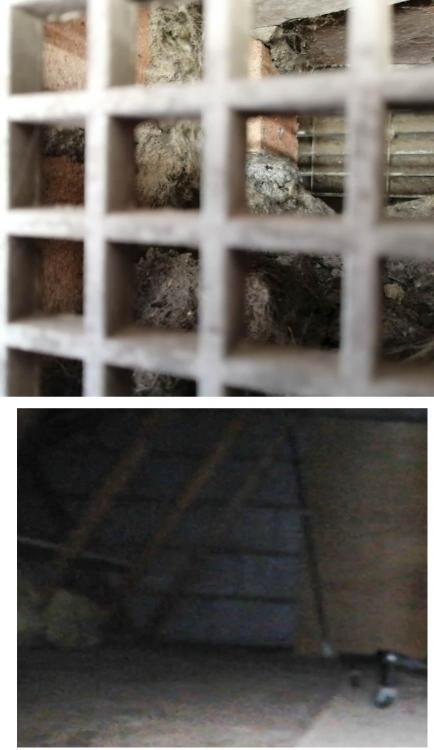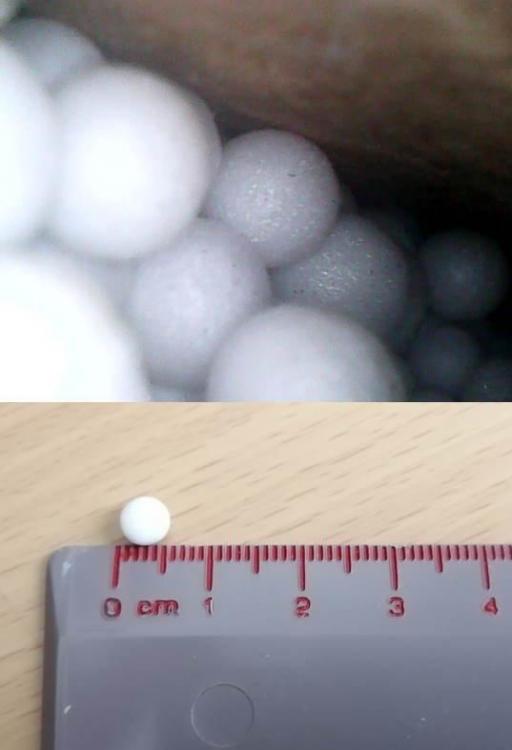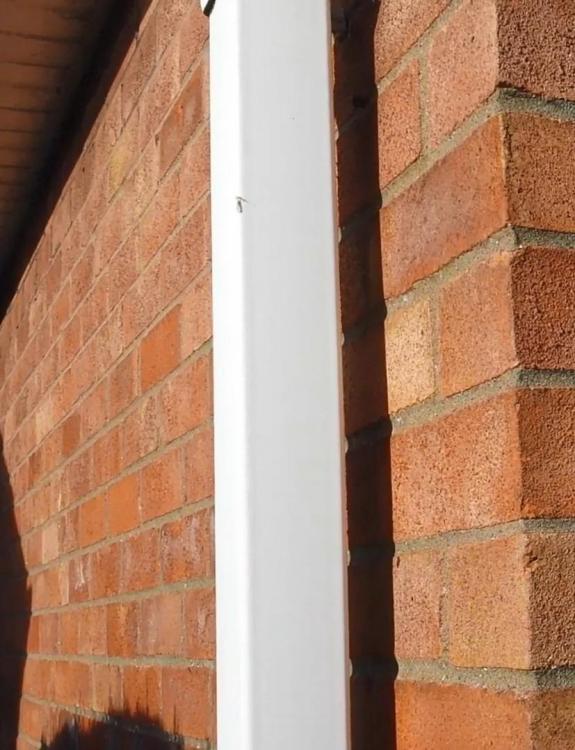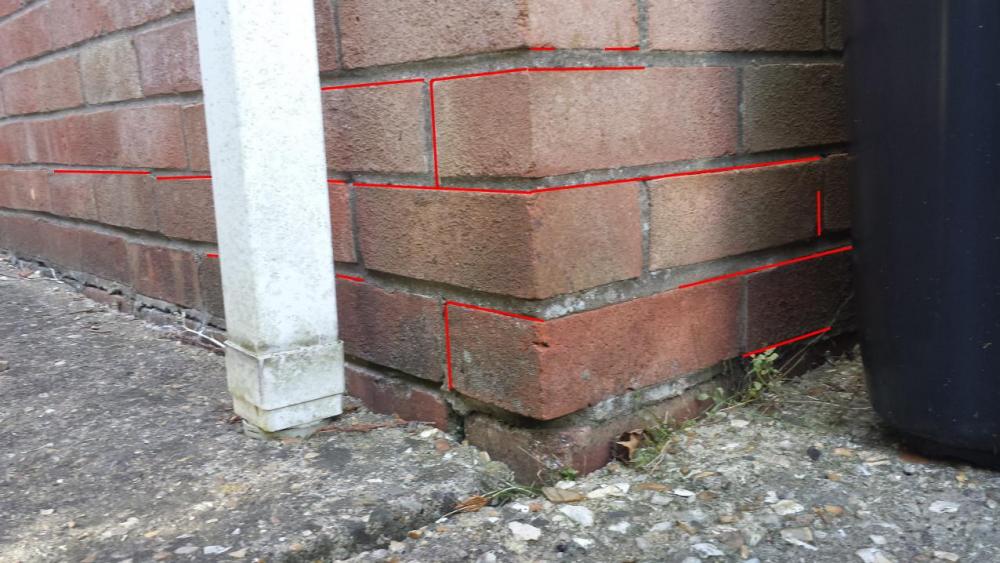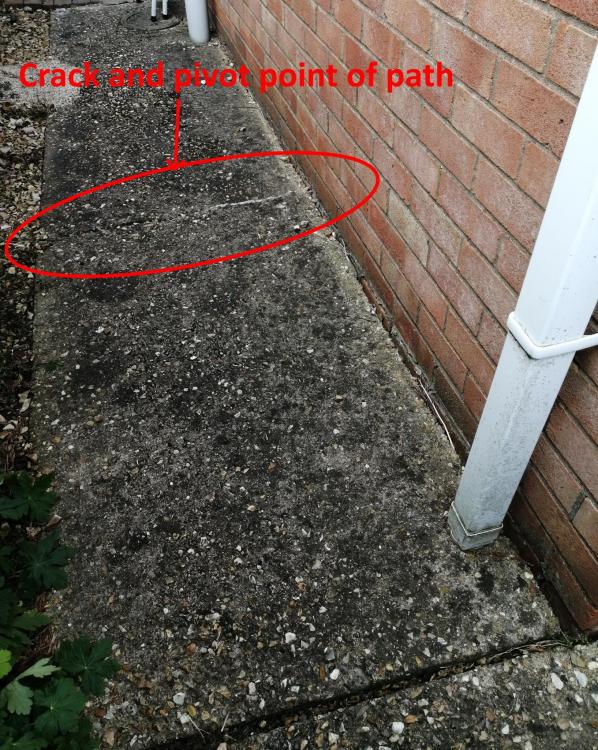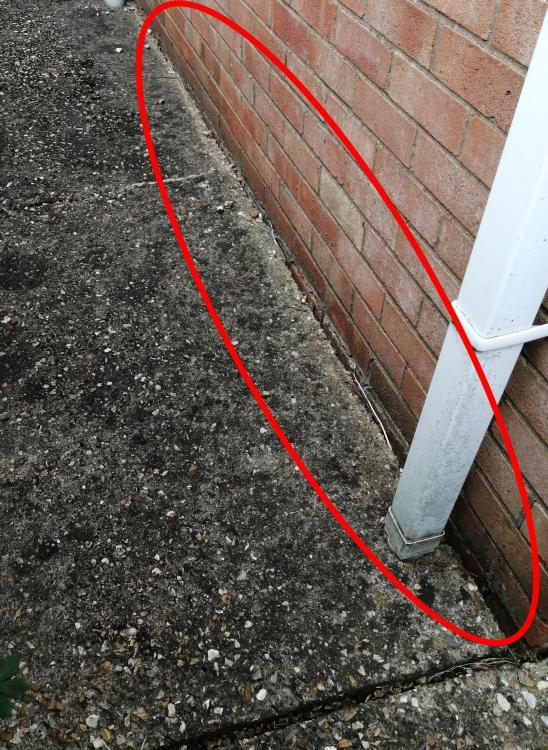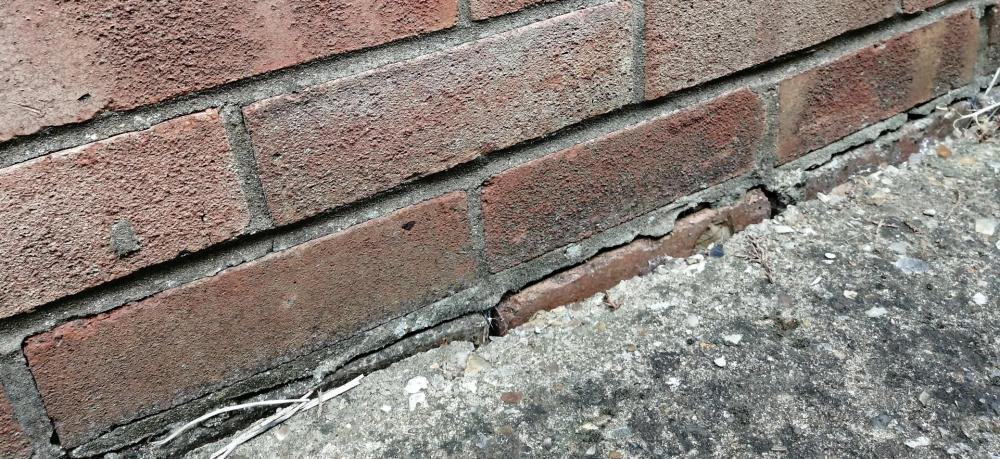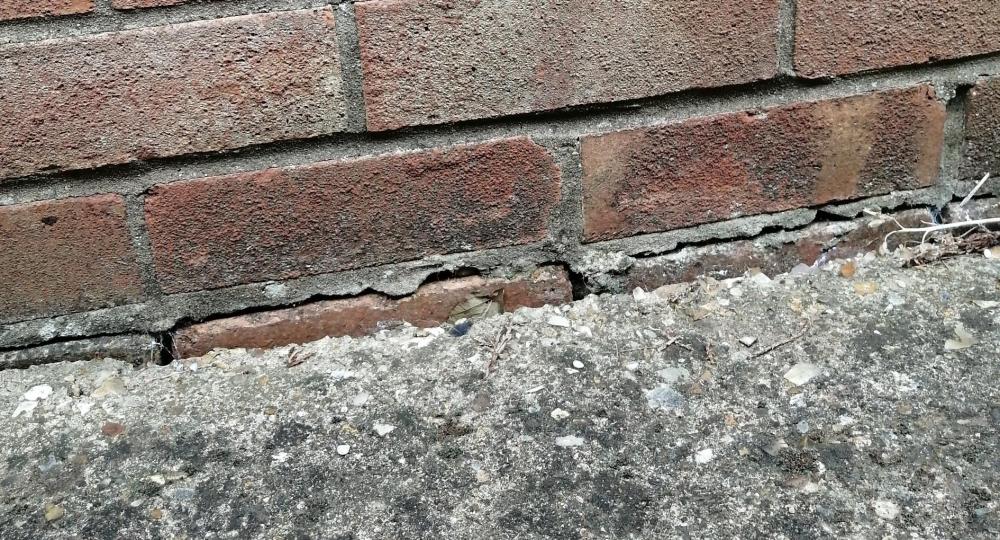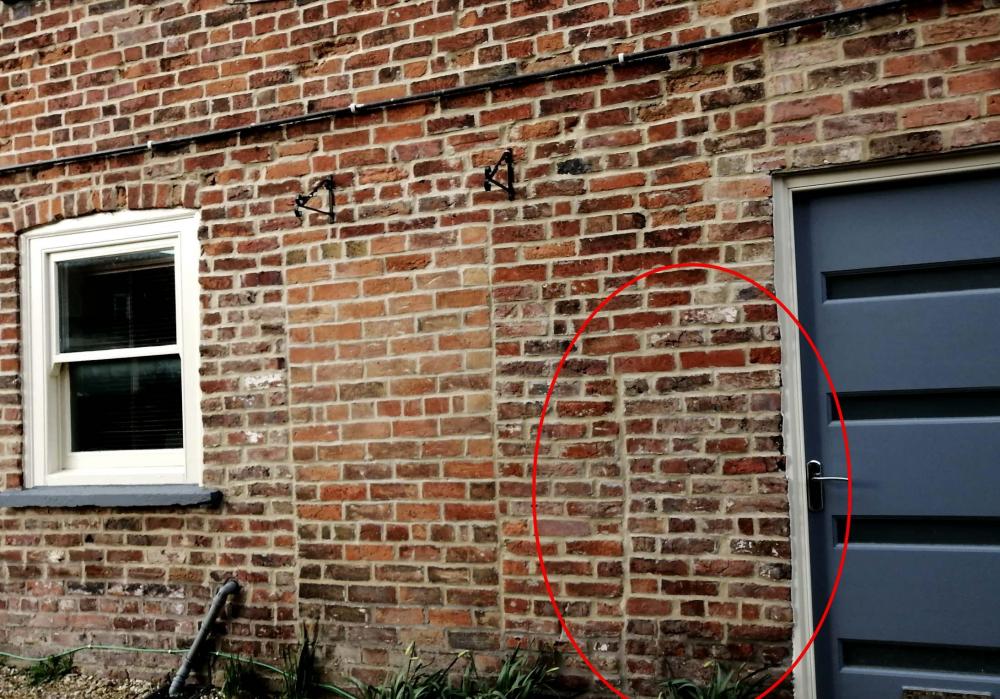
dssr
Members-
Posts
23 -
Joined
-
Last visited
Everything posted by dssr
-
@Mr Punter Yes, its a major refurb. The place is a mess lol My budget only allows for the fitting of a complete CE system, the rest I have to do. Which is a lot including digging up 48m2 of 100mm concrete @dpmiller X marks the spot on the plan for the shower gully, the waste goes out the wall to where its marked drain cover.
-
@TonyT That will be the route I'll take if under the floor covering there is no ghost line of previous channel work. @Marvin The sink is to the right of the toilet, and the shower gully to the left. All three are in line with the pipe going into the chamber. So I'm hoping there is one wide channel to be found from the previous install. If not, then I'll exit through the wall into the stack as noted above, and box-in the sink and bath waste. The Rad pipework is on the other side of the room and looks undisturbed (i.e a new narrow rad was fitted at the same time and the pipework was adjusted above the flooring to fit. I'd have expected the pipework to have been correctly altered under the floor if the whole floor was dug up.
-
Indeed. Its the amount of floor that needs to be taken up that I want to minimise. I was hoping to put the toilet back it its original location, thus only dig up the floor in that area and reconnect it with a replacement single socket access bend. I'm hoping once the floor covering is up, I'll see where the floor was disturbed so I can see what changes were made.
-
@Marvin I Managed to take a drive up and take a look. Not sure what I’m looking at, but under the Marley cover is voila. I’m assuming this plastic pipework is a modern replacement post 1973, and joins onto clay pipe? I’ve removed the outer access cover. Although the picture doesn’t show it, the access port is at a slight angle facing downwards. If a line was drawn between the pipe and the main sewer, the vent pipe would be around 40cm above it?? Does that help any?
-
plumber or bathroom specialist/rennovator to fit new bathroom?
dssr replied to TryC's topic in Bathrooms, Ensuites & Wetrooms
I unable offer any practical advice. However, I’m in a similar situation to you and have also had trouble securing tradespeople, and establishing which trade would be best suited for the work. I’m left with no other choice then attempt to undertake the work myself. When you only have one toilet, and you’re about to cut into the concrete floor to find out what exists below, never mind understand what you’ll find below, it becomes a tad daunting. No doubt a port-a-bog will have to be hired / bought in case it all goes down the pan (excuse the pun).- 1 reply
-
- 1
-

-
Dimensions are 1.45 x 2.37 m, so not a lot of space, although there are 'tile themed wall sheets' on studwork, so may be more space when removed. I attempted to lift the drain cover but it was stuck. I live a 90 min drive away from the bungalow, so wont be up there again for a few weeks. This work needs doing before we can move in. I have attached a photo of the outside which shows the layout if it helps in any way.
-
I may have originally put this post in the wrong section, could the mods take a look. I’m looking to change the bathroom layout in a bungalow I’ve just purchased from A to B (see pic). I suspect the original layout once resembled B. Will I need to break up all the concrete, or just channel it out to lay the new pipework. If so, how would I reinstate any damp course that I disturb. Finally, the money question. If I don’t feel confident to tackle this stage of the work, what should I expect to be charged to lay pipework and relay/screed(?) the solid floor? Thanks in advance
-
I’m looking to change the bathroom layout in a bungalow I’ve just purchased from A to B (see pic). I suspect the original layout once resembled B. Will I need to break up all the concrete, or just channel it out to lay the new pipework. If so, how would I reinstate any damp course that I disturb. Finally, the money question. If I don’t feel confident to tackle this stage of the work, what should I expect to be charged to lay pipework and relay/screed(?) the solid floor? Thanks in advance
-
Lower brick course separating along a 2 - 3 metre area of external wall.
dssr replied to dssr's topic in Brick & Block
So mineral wool at point of construction in the 60s would have be forward thinking? No extension, all four walls are the original footprint, so weird how they have mineral wool on one side, and beads on the other. Any reason why the inner leaf's are blocks at the gable end and brick for the sides? Not a concern, more a curiosity. -
Lower brick course separating along a 2 - 3 metre area of external wall.
dssr replied to dssr's topic in Brick & Block
@Brickie and @markc @Marvin and others who’ve helped and advised. On the results of my recent trip, it doesn’t look to be anything of concern. The first pic shows the only place I can fit a <1mm scraper in, and the only area a thick knife will fit. Anywhere else along those bricks and the mortar is firmly bonded to the top and bottom bricks, no gap whatsoever. Picture 2: The vent in the picture is at the top of the wall where it meets the roof. Inside there is some form of insulation (wool-based material?) between brick inner and outer. The gable end has blockwork for the inner wall. Is that normal? Picture 3: Using a borescope, on the other side of the property there are loose (not glued) beads in the cavity. I cannot find holes in ‘any’ of the walls to suggest beads have been blown in? Could they have been installed when the UPVC windows were installed Oh, and I found the DPC. lol -
Lower brick course separating along a 2 - 3 metre area of external wall.
dssr replied to dssr's topic in Brick & Block
The area is on a chalk / limestone bedrock. To dig a pit would mean smashing the concrete. I have yet to buy the property, so that's not an option. However, if I do then I will dig a test pit regardless to inspect, repair etc. -
Lower brick course separating along a 2 - 3 metre area of external wall.
dssr replied to dssr's topic in Brick & Block
I’ve received some real down to earth well thought out advice on this thread, and it’s been very much appreciated. If I go ahead with this sale, then no doubt I’ll be a regular ‘how do I do this’ forum member as the property requires a full modernisation program. I’ll look again this week and investigate if an engineer is available to have a look around, then carefully consider what the risk will be going forward. -
Lower brick course separating along a 2 - 3 metre area of external wall.
dssr replied to dssr's topic in Brick & Block
The local area is on shallow lime-rich soil with a chalk / limestone bedrock. Its not a subsidence hotspot, and there are no ‘known’ issues with any other properties in the street or close by. I have been given until this weekend to consider my options. The property is a 90-minute drive away; however, I’ve arranged one last visit. In the limited time I have available to me, is there anything else I should I look for that doesn’t involve digging up the path? -
Lower brick course separating along a 2 - 3 metre area of external wall.
dssr replied to dssr's topic in Brick & Block
Yes I have, it all looks okay, no window exists above. I've included an image showing part of the wall directly above the area in question. -
Lower brick course separating along a 2 - 3 metre area of external wall.
dssr replied to dssr's topic in Brick & Block
On the corner wall showing the red lines, you can on one, or maybe two. The gap along the bottom by the path, you can on around 25% of them. However, I couldn't say how far into the brickwork the knife would go. For example: In one area by the path where two bricks are next to each other, and all the pointing remains in situ. You could just get a knife in part way, but the next brick along you couldn't. -
Lower brick course separating along a 2 - 3 metre area of external wall.
dssr replied to dssr's topic in Brick & Block
Current owner has never had any repointing done since he moved in during the 80s. All the pointing matches in colour, texture etc throughout all walls. My initial thoughts were subsoil washed away due to downpipe, path sinks and takes out mortar. However, its like it further back on the same wall where the path is still in-situ. Also, the gap is around 5mm wider where the cement is missing compared to the rest of the wall. Its as if the bricks have dropped, but I'll take splash erosion any day! I scrapped away some mortar on three courses above ground and no DPC was found. Not conclusive, but I'd expect something. Picture attached shows the wall on the other side of the house which is fine. The bottom joint is a shadow, its not the dpc sticking out. -
Lower brick course separating along a 2 - 3 metre area of external wall.
dssr replied to dssr's topic in Brick & Block
Cash sale. I'm unable to find any DPC, that's not to say a builder wont come along and point it out to me within seconds. But try as I might, I really cannot find any. The property was part of a development across 8-10 streets comprising of mainly 3 and 4 bed bungalows all built slightly different. The pictures show up to nine courses of brickwork, none of which suggest a DPC. Unless it was in the course that has the large gaps and been pulled out. For the rest of the property it may behind 5mm of pointing? There is no obvious damp, brick outer, block inner with air bricks and no cavity filling. I'm not sure if that's odd or not. -
Lower brick course separating along a 2 - 3 metre area of external wall.
dssr replied to dssr's topic in Brick & Block
I have to decide by tomorrow evening if its worth buying. The rest of the brickwork looks fine. Its just this area. The concrete path has sunk a little exposing those bricks (shown circled in photo). Indeed, I believe the concrete was bonded onto the pointing and has its sank, its ripped some of the pointwork out (laymans theory!!). On the corner, there are fine 1mm gaps opening up in the mortar joints (highlighted red on the attached photo of this post). Not sure if this is due to movement as I'm green to all this. The fact I cannot find any DPC is concerning. The property could even be early 70s, but I'd say older than mid 60s. -
I have asked about this on another forum; however, I’m desperately trying to get some indication of the issue before tomorrow. Brickwork on 60s det bungalow separating along a 2 - 3 metre area of one wall (area circled red). In addition, the course below (just visible) has no cement on the brick ends and they’re aligned in a stack bond? It’s been suggested normal movement above DPC which makes perfect sense. However, there is no DPC where the mortar is falling out, or can be found in any of the lower brickwork around the property. Suggestions ?
-
I managed to speak with a local resident in their 90s who has lived in the area since birth. He told me the coal was kept in an outside bunker, and has no knowledge of any house in the village having coal storage attached to the house. The house has never had a seller either. I've since found another similar vertical mortar line on the other side of the window in the second picture. The two would be about 7 foot apart, with the window in the middle. I'm becoming more concerned its some form of structural repair / bodge, but for the life of me, I 'm unable to image what ! I've yet to come on to - what I term - the extension!
-
That was my original thought, but all the original entrances are the same height as the one bricked left of the red circle. If both these vertical joints suggested an entrance, it would be very low at around 4 foot, also the vertical joint on the corner does not go all the way to the ground, which is very odd. I wondered if it could indicate a structural repair of some sort. The council have no plans except for a ground layout when surface water drains were added. The architects who were part of the updating work back in 2000 no longer exist.
-
I’m taking on this early to mid-Victorian property. For now – just to keep things simple- can anyone explain the vertical mortar lines circled red? One is on the gable end (next to the door), the other on a different side of the house close to the corner (left of the window). The property was subject to works during early 2000 according to local planning; however, I’ve not been successful in finding out what was done. Ignore the blocked up door, and vertical line upwards on the left side of the door frame. That can come later !
-
I'm in the process of taking on an early Victorian house, that no doubt will be requiring much work. Some of which I'm hoping to complete myself...........with some help and advice from others!
- 1 reply
-
- 1
-


